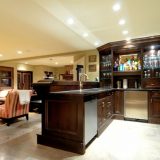Quick DIY Photo Backdrop Stand Installation Process
Having a dedicated photo backdrop stand is a game-changer for any hobby or professional photographer. Whether you’re looking to take better product photos, expand your portfolio, or step up your Instagram game, a backdrop stand delivers crisp, consistent backgrounds to make your subjects pop. But buying a pre-made photo backdrop and stand can cost a pretty penny. With some basic
DIY photo backdrop stand skills and materials from your local hardware store, you can build your own for a fraction of the price (and have fun doing it!). This straightforward, step-by-step guide will walk you through the entire process, from gathering materials to assembling your sturdy, customizable photo backdrop stand. With the right plans and techniques, you don’t need fancy tools or previous building experience to pull this beginner woodworking project off. So grab your tape measure and let’s get started!
Things You’ll Need
Before starting this DIY photo backdrop stand skills project, you’ll want to make sure you have all the necessary materials on hand. At a minimum, you’ll need:
– 3⁄4” x 2” x 8’ pine boards – the number needed depends on the size of your backdrop stand, but plan for at least 6 boards
– Corner brackets with screws – 8 should do the trick
– Pocket holes jig kit
– Wood glue
– Sandpaper – 220 grit
– Wood filler (optional)
– Primer spray paint
– Paint color(s) of your choice
– Paint brushes and supplies
– Backdrop of your choice – roll paper, fabric, vinyl, etc. Think about sizing here!
– Helper for assembly – projects are always more fun with two!
Prepare the Boards

With your materials gathered, the first step is preparing the pine boards by cutting them down to size with a miter or circular power saw. Wear proper eye and ear protection here, and refer to the measurements below:
– 2 boards cut to 8’ – the vertical backdrop supports
– 2 boards cut to 6’ – the upper horizontal supports
– 2 boards cut to 2’ – the base
– 2 boards cut to 1’ – the feet
Now is also the time to sand down any rough edges or splinters on your boards. Be sure to break all sharp corners and apply wood filler to any imperfections or knots if desired. The smoother your boards, the better the final painted surface will look.
Once sanded, wipe away all dust with a dry cloth. Use primer spray paint to provide an even base coat on all sides and edges of the boards. Allow the primer to fully dry as they can direct before moving to the next steps.
Assemble the Backdrop Frame
With perfectly primed boards ready to go, it’s time for the fun part – bringing together your backdrop frame! Grab your trusty helper, corner brackets, pocket holes jig, and wood glue to start this assembly process.
First, attach the 6’ upper horizontal supports to each 8’ vertical board using wood glue and corner brackets. Get as close to the top of the vertical boards as possible here for maximum support. Use a carpenter’s square to check for 90-degree angles on the corners as you secure the brackets in place with provided screws.
Next, flip the whole backdrop frame structure upside down to attach the shorter 2’ base pieces with pocket holes, forming a wide, upside-down “U” shape. Centering these smaller boards is key for keeping the stand balanced and sturdy. Follow any instructions provided with your jig and drill kit for securing these boards.
Complete the Structure with Feet
The last step in completing the physical backdrop frame structure is attaching the 1’ feet boards. Simply center and glue each 1’ board along the bottom of the 2’ base pieces, keeping them flush. Use corner brackets here as well for additional reinforcement.
Once assembled, carefully stand your backdrop frame upright and admire your handiwork! Make any adjustments needed until you’re satisfied with the alignment and right-angle corners.
Apply Finishing Paint Coats
Before hanging any backdrops, you’ll want to complete the DIY photo backdrop stand with protective, decorative final paint coats using the color(s) of your choosing. For the smoothest possible surface, lightly sand all sides and edges again with fine 220-grit sandpaper. Thoroughly wipe away dust with a tack cloth.
Using your paint brushes and supplies, apply at least 2-3 thin, even coats of paint to completely cover and seal the wood. Allow each light coat to fully dry before adding another. Stepping outdoors or opening windows to avoid inhaling fumes is smart. Add painter’s tape as needed to crisp edges.
Some inspiration for backdrop stands paint colors:
– Black for a modern, monochromatic look
– White for a bright, airy feel
– Wood tones for a natural vibe
– Primary colors like red, yellow, or green for a playful pop
– Metallic silver or gold for glam
Get creative and complement the backdrop you’ll be hanging or mix and match multiple colors! Pro tip: Use water-based acrylic paints for easy soap and water cleanup.
Hang Your Backdrop

Once the final coat of paint has dried on your custom DIY photo backdrop stand, it’s finally time to hang your backdrop material! Roll paper, fabrics like muslin, vinyl, and other materials can all work beautifully.
Measure the length between your vertical 8’ supports and use painter’s tape, backdrop clips, or custom hanging brackets to securely display your selected photography backdrop. Many backdrops come ready to hang with pole pockets, grommets, or loops along the top edge. Your stand assembly is now complete and camera-ready!
Tweak and accessorize your photo backdrop stand over time by adjusting the height, adding small shelves to hold props, attaching removable casters for mobility, and more. The possibilities are endless when you DIY.
Last Words
Building your own DIY photo backdrop stand is an achievable weekend project for photographers on a budget. With the detailed steps and beginner-friendly advice above, you can construct a customized, professional-level photography gear centerpiece using affordable wood materials and basic tools. Spend more on upgrading lenses or studio lighting equipment instead of overpriced stands. Then enjoy consistent headshot, product or portrait backdrop results in your unique home studio space. Don’t be intimidated to tackle this introduction to woodworking solo or grab an outgoing friend to assemble with for more fun. Just mind safety precautions when handling power tools and lifting. Before you know it, you’ll have a personalized photography backdrop stand that looks like you splurged…shhh!
With a passion for capturing incredible shots and some scrap lumber gathering dust, anything is possible. A world of creative photographic potential awaits behind whatever brilliantly-colored DIY backdrop you choose to hang first!
FAQs
-
Does backdrop size matter?
Choose backdrop dimensions that best suit your available space, subject matter and overall photography goals. For full-body portraits, 10×20 feet is ideal. Smaller tabletop product images only require a 4×6’ backdrop. Buy your fabric first or consider the length between vertical supports for optimal flexibility to size up or down later as skills grow.
2. What hardware is best for hanging backdrops to a DIY stand?
It depends on your backdrop material! Looped or pocketed fabric and paper respond great to basic backdrop hooks or clips, while sturdy grommets work nicely with adjustable curtain rods. For versatile vinyl backdrops, consider installing horizontal furring strips to attach hooks or clips anywhere desired.
-
Can I use plywood instead of pine?
While pine boards are recommended for straightness and strength, plywood can also work for this beginner wood project. Opt for 3⁄4” birch plywood for the smoothest possible finish after painting. Be prepared to put more effort into evenly sanding plywood’s multiple layers first.
-
What if I don’t have power tools?
No power saw? No worries! Many home centers offer straight, square-cut lumber right in-store to save you heavy cutting. For pocket hole joinery, try an affordable manual jig kit that doesn’t require electricity. And assemble your structure using old-fashioned elbow grease for drilling screws. It just might take a bit longer without power assistance.
-
How can I customize or upgrade my photo backdrop stand?
First focus on getting the basics down with this beginner DIY guide. Later on, incorporate DIY or purchased accessories like small side shelves, commercial backdrop hanging systems, locking casters for mobility, and adjustable curtain rods to hang a variety of photography backdrops from your custom stand for years to come. The possibilities are wide open!















